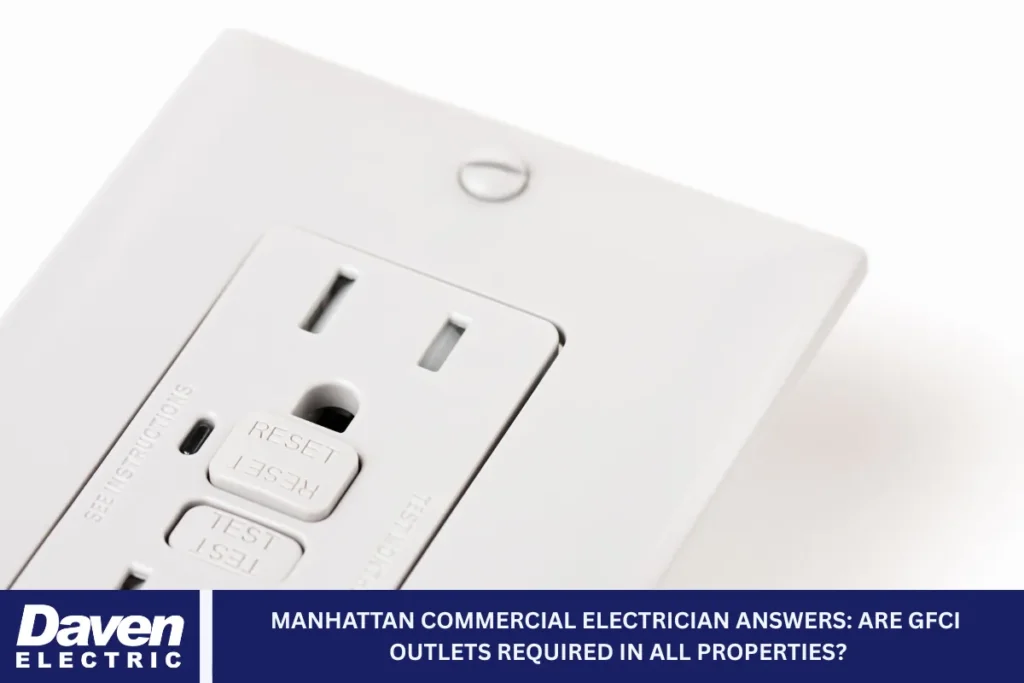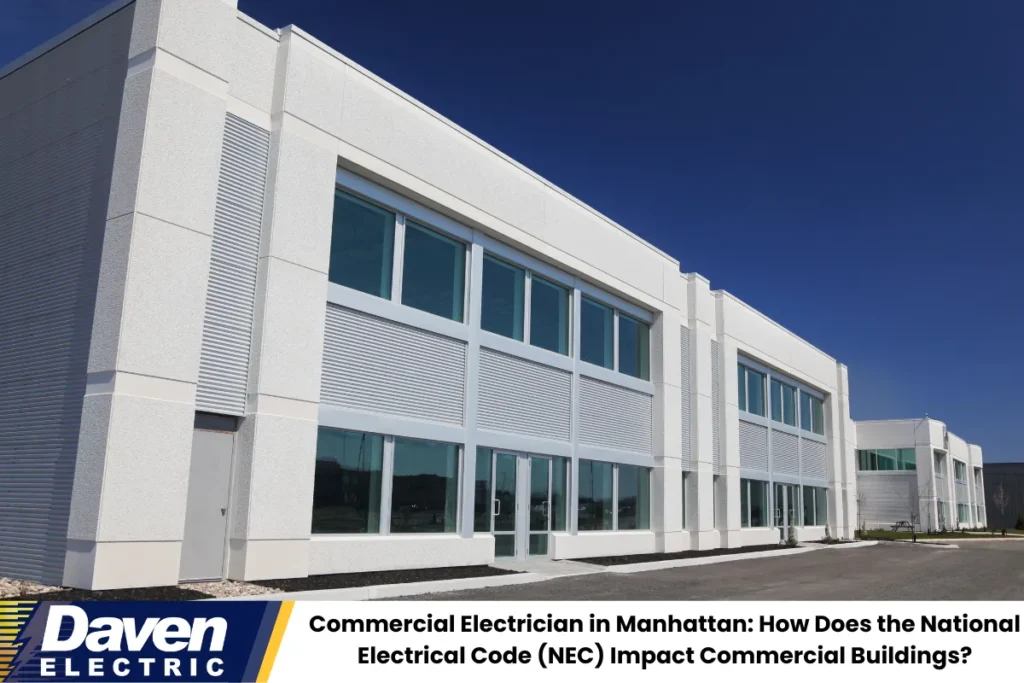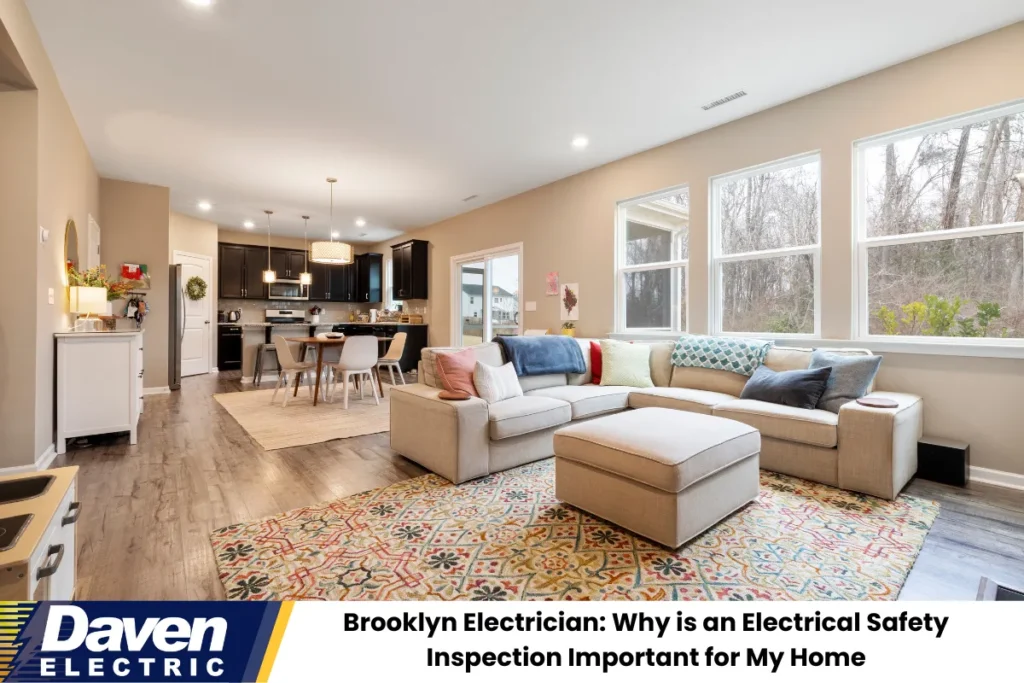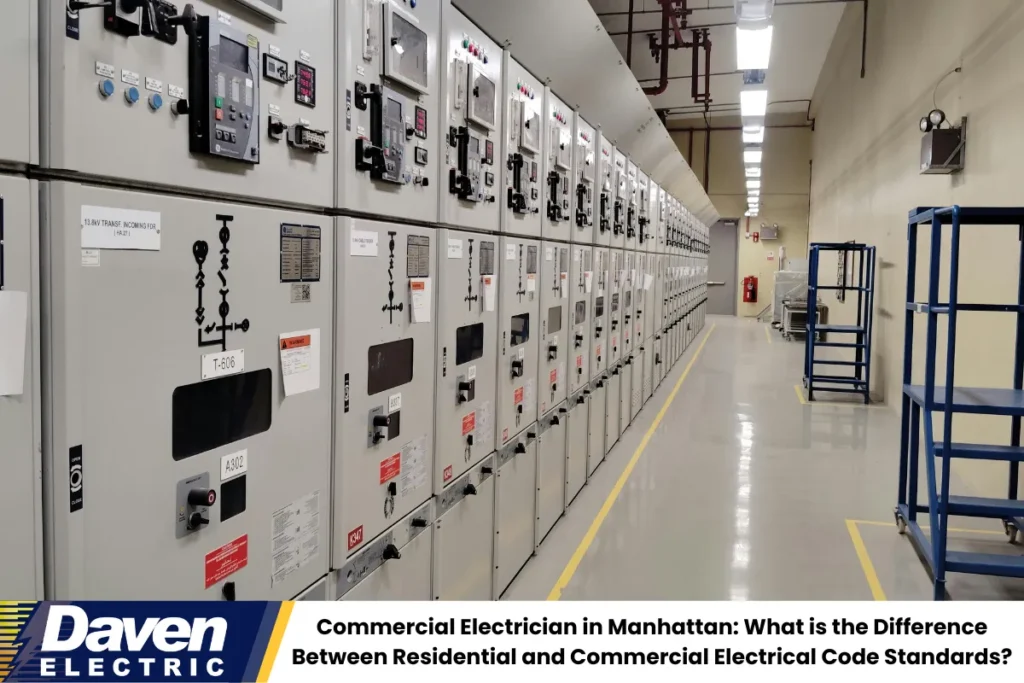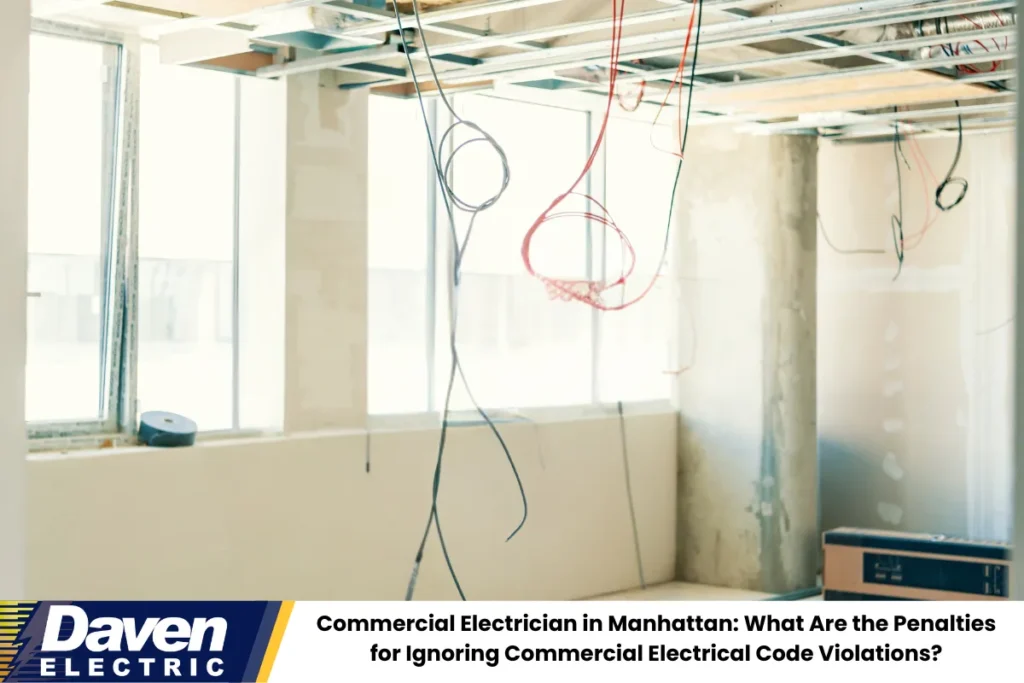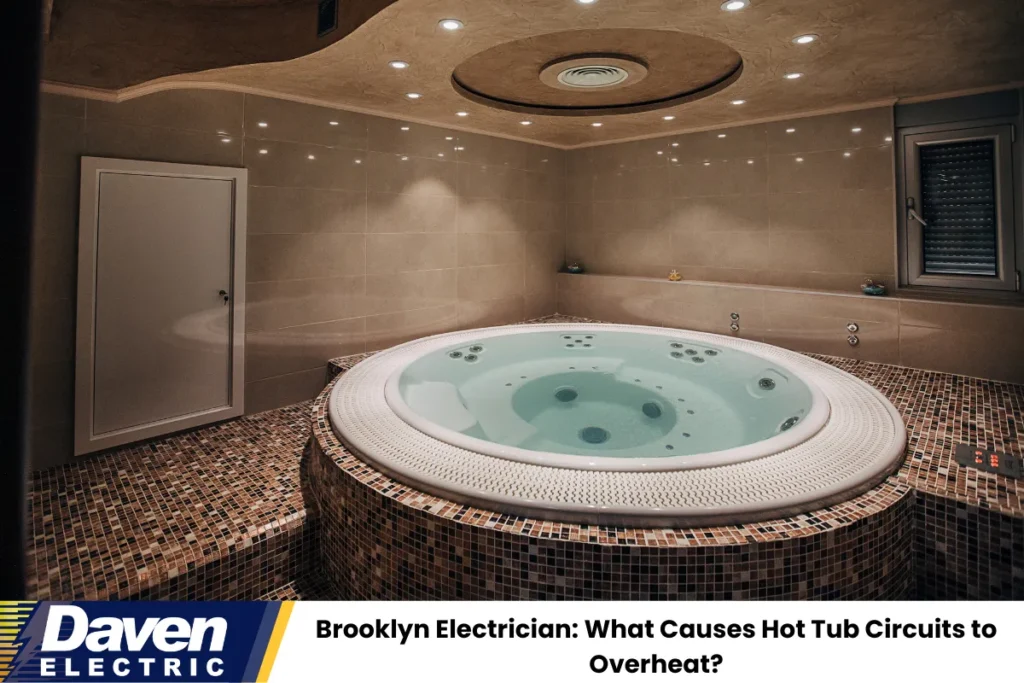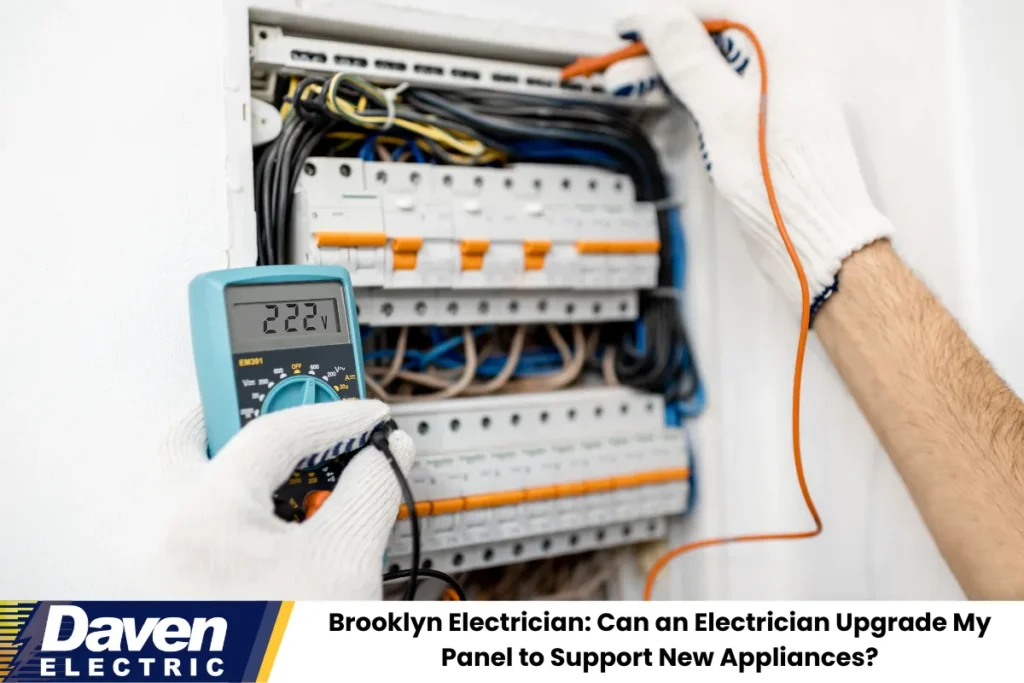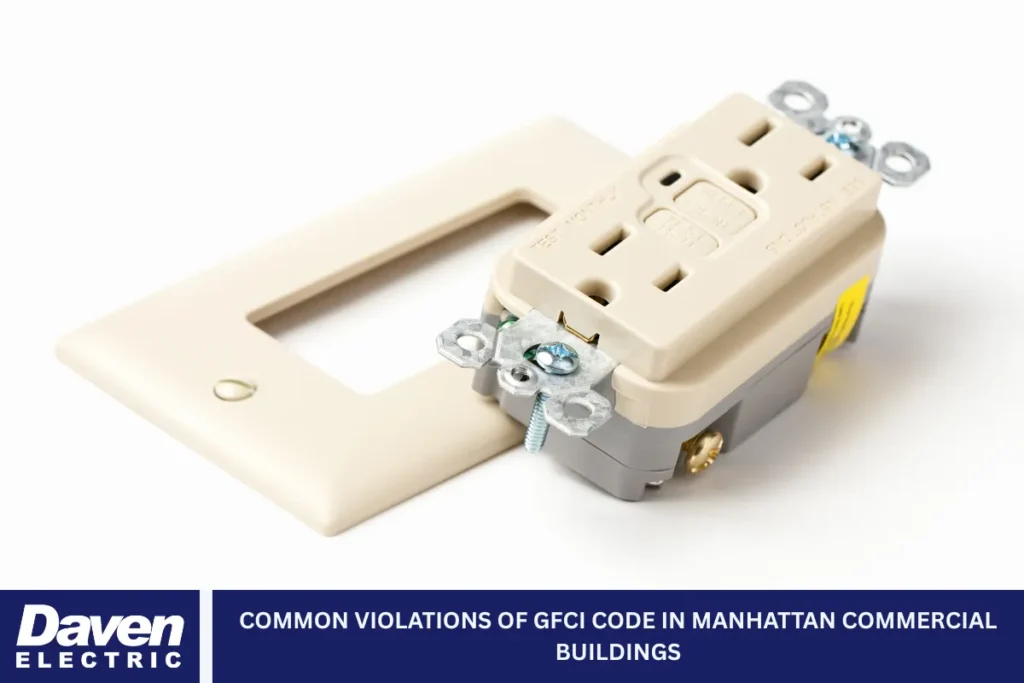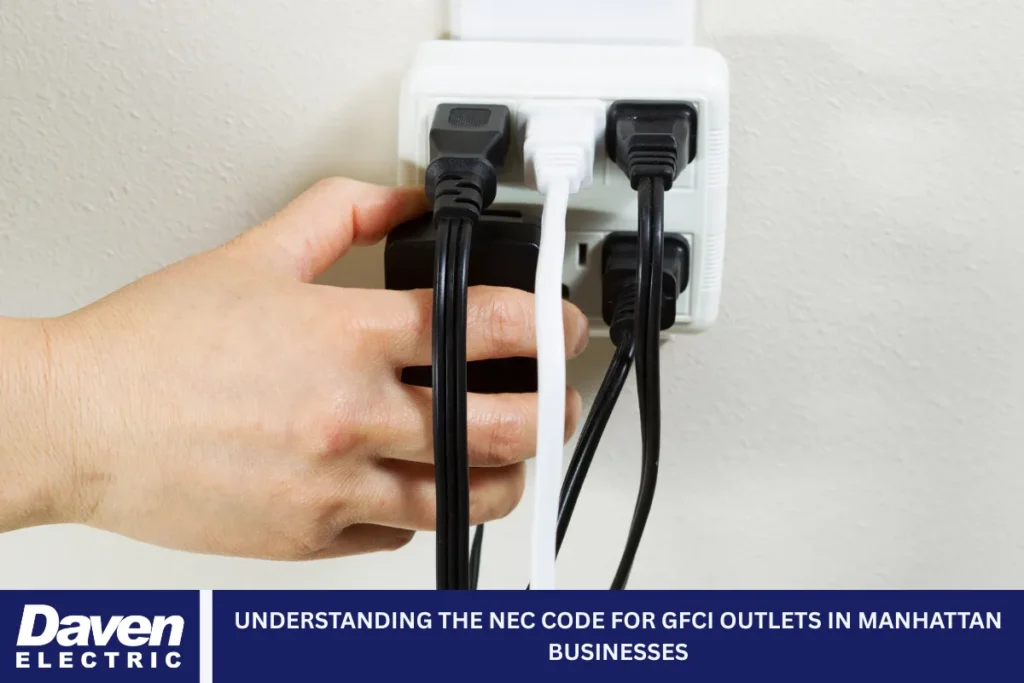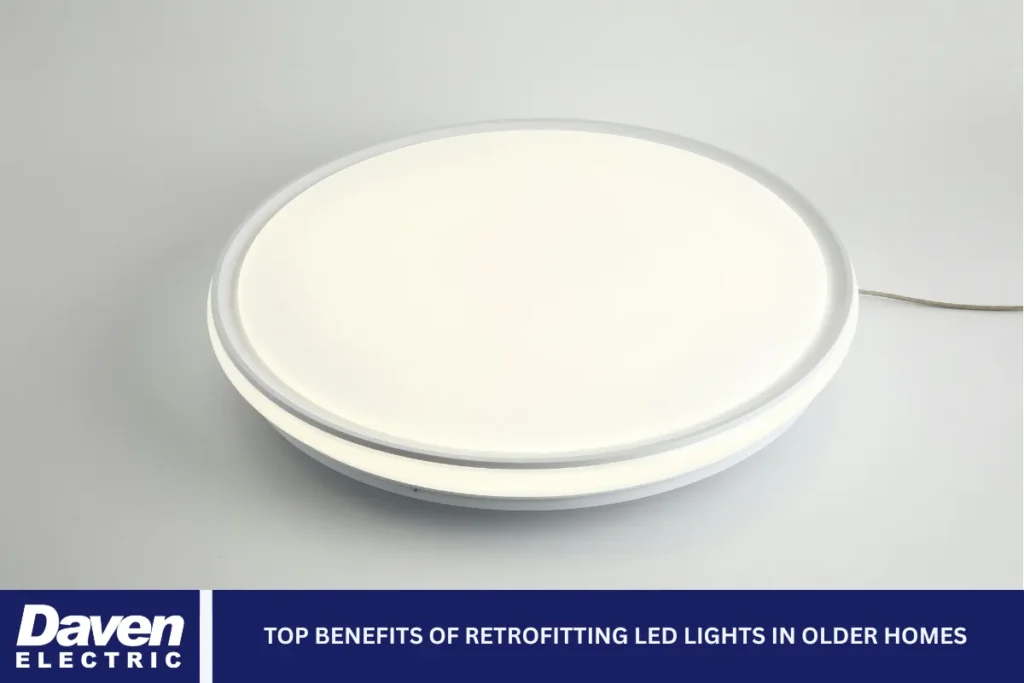Understanding the Role of GFCI Outlets in Electrical Safety
GFCI outlets, short for Ground Fault Circuit Interrupter outlets, play a major role in modern electrical safety standards. The commercial electrician in the Manhattan industry continues to emphasize the importance of these outlets across various building types due to their ability to prevent electric shocks in hazardous conditions. A GFCI outlet works by constantly monitoring the flow of electricity through a circuit. If it detects a slight deviation in the electrical current — often caused by unintended grounding, such as through a person’s body — it immediately shuts off power to prevent injury.
This rapid response happens within milliseconds, which can be life-saving in certain situations. These outlets are especially necessary in areas where water and electricity may come into contact, such as kitchens, bathrooms, and utility rooms. In commercial buildings, where the use of equipment and appliances is frequent and often involves moisture or liquids, GFCIs become even more crucial for protecting both occupants and equipment.
Unlike traditional outlets, GFCI outlets have two small buttons labeled “Test” and “Reset.” These allow users to ensure the outlet is functioning correctly. If the GFCI trips due to a fault, the reset button allows the circuit to be restored once the issue has been resolved. It’s a small but highly effective piece of technology that prevents major accidents.
Areas Where GFCI Protection Is Mandated in Manhattan
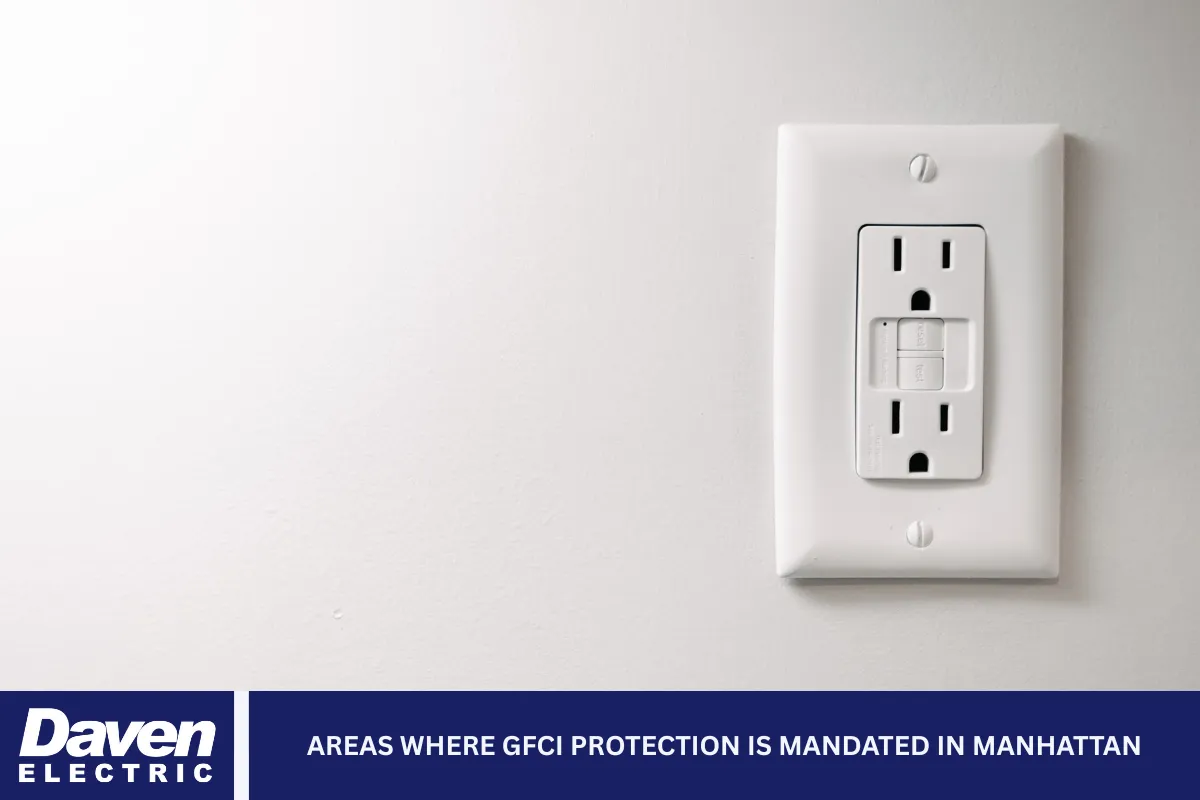
Across Manhattan, both residential and commercial properties are required to follow specific electrical safety regulations that include the installation of GFCI outlets in certain zones. These requirements are largely based on the National Electrical Code (NEC), which New York City adopts with local adjustments to meet the demands of urban infrastructure.
In commercial spaces, GFCI protection is mandatory in various areas. This includes:
- Bathrooms and restrooms
- Kitchens and pantry spaces
- Rooftops
- Laundry and utility rooms
- Basements
- Anywhere within six feet of a water source
- Exterior outlets
- Crawl spaces
- Garages and workshops
- Areas where vending machines or refrigeration units are used
Each of these areas is considered to be at risk for electrical hazards due to the presence of water, grounded surfaces, or heavy-duty electrical appliances. GFCI protection ensures that these high-risk zones are equipped to prevent fatal accidents and meet city safety codes.
For example, in a commercial kitchen, several appliances such as coffee makers, dishwashers, and microwaves may be plugged in near sinks or wet countertops. Without GFCI outlets, a minor fault could lead to a serious electrical shock or even a fire.
Compliance with Electrical Codes in Manhattan Properties
The New York City Electrical Code enforces guidelines derived from the NEC. Still, it often includes additional local amendments to address the unique needs of the city’s infrastructure. In a place like Manhattan — where historic buildings, high-rise towers, and mixed-use facilities coexist — compliance is not optional. All commercial property owners, developers, and building managers must ensure their electrical systems meet the current safety standards.
If a building is being renovated or altered in any way, GFCI outlets must be installed in all the areas required by code. This applies even if the original construction predates GFCI requirements. For older commercial properties, upgrades are necessary whenever modifications are made to the electrical layout, no matter how minor they may seem.
During inspections conducted by the NYC Department of Buildings, failure to meet these requirements can result in penalties, the withholding of Certificates of Occupancy, or orders to make costly corrections. Ensuring that GFCI protection is in place where required is one of the first things inspectors look for during an electrical evaluation.
Why GFCI Outlets Are Essential in Commercial Buildings
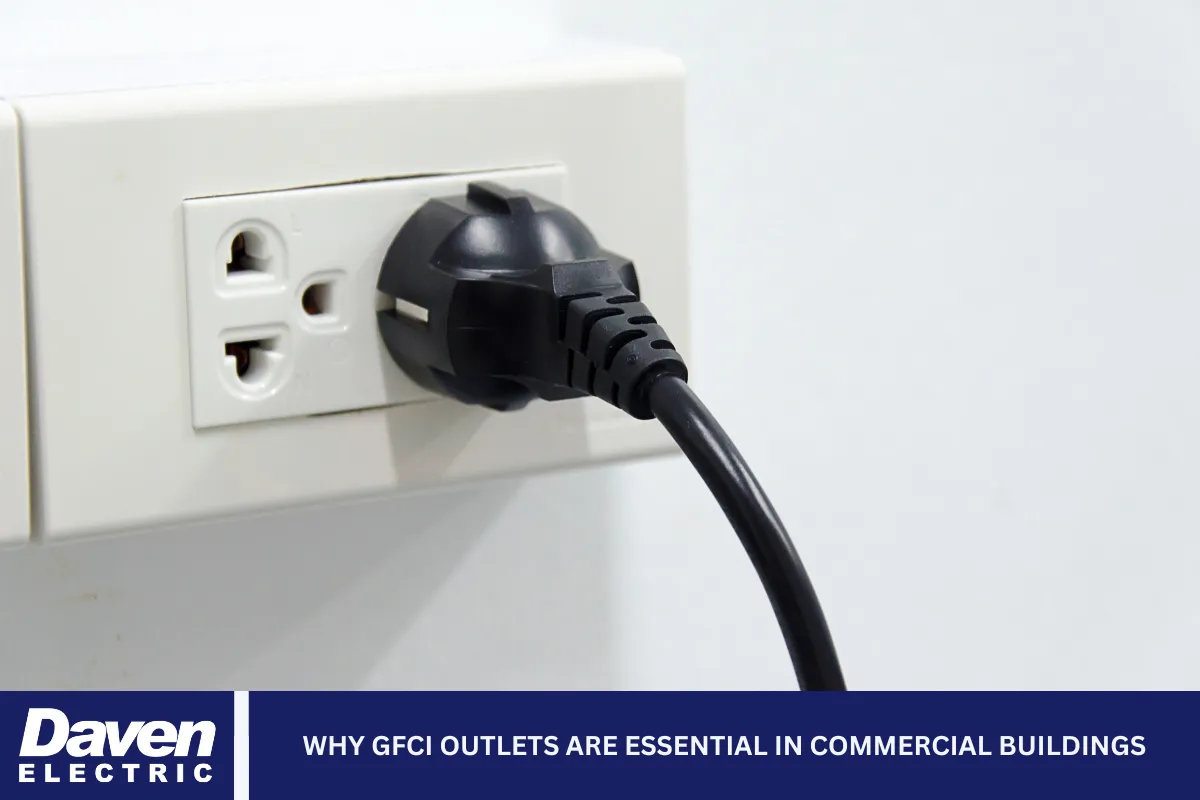
In commercial environments, electrical safety is not only about code compliance — it’s also about protecting employees, customers, equipment, and infrastructure. The use of GFCI outlets reduces the chances of severe electrical shocks. It mitigates the risk of fire resulting from electrical faults.
Many businesses use equipment that draws a high electrical load, increasing the likelihood of faults or current leakage. GFCIs can prevent small electrical issues from becoming life-threatening events. For example, janitorial staff using floor cleaning equipment, or employees using kitchen appliances in break rooms, are all exposed to possible electrical risks that can be reduced with proper GFCI protection.
Moreover, these outlets provide an easy way to detect faults. If a GFCI trips frequently, it’s a signal that there’s an underlying problem with the circuit or the connected appliance. This serves as a warning system, enabling building managers to address electrical issues before they cause damage or injury.
Differences Between Standard and GFCI Outlets
Understanding the functional differences between standard outlets and GFCI outlets helps illustrate why the latter are essential in specific environments. A standard outlet supplies electricity; it has no mechanism to detect faults or interrupt power if something goes wrong. In contrast, a GFCI outlet continually analyzes the current balance between the hot and neutral wires in a circuit.
If an imbalance is detected — even as little as 4 to 5 milliamps — the GFCI responds instantly by cutting off the power. This can prevent electrocution in scenarios where the current escapes its intended path and begins traveling through a person’s body or nearby conductive surface.
This crucial safety mechanism doesn’t exist in regular outlets, which is why GFCI versions are mandated in areas with a heightened risk of electrical hazards. For commercial property owners in Manhattan, replacing standard outlets with GFCI units in the required locations is a necessary investment in building safety and code compliance.
How Commercial Electricians Assess GFCI Needs
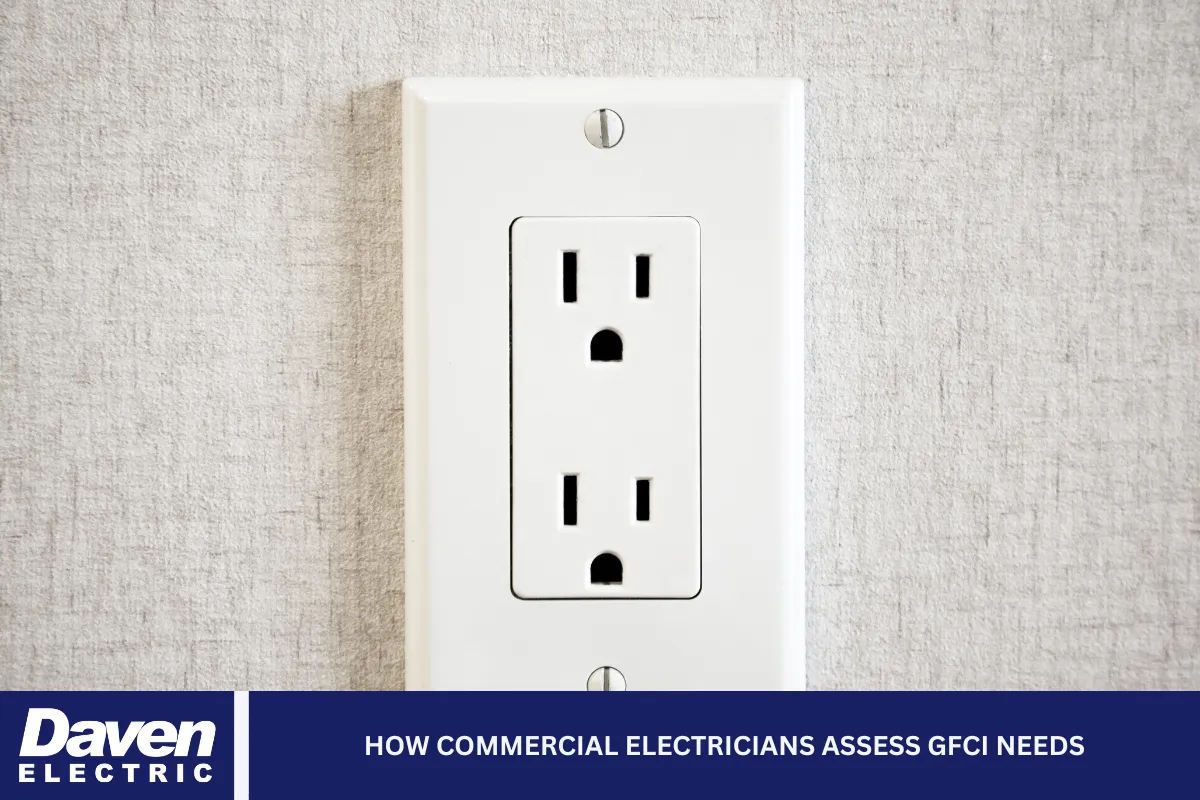
When evaluating a commercial building, professional electricians begin by identifying zones where GFCI protection is mandatory. This assessment includes checking for sinks, water pipes, floor drains, exterior doors, and any appliances or machinery that use water or operate in damp conditions.
After pinpointing the high-risk zones, the electrician inspects the wiring to determine whether the existing outlets are compliant with the relevant standards. In many cases, older buildings may still have ungrounded or outdated outlets that don’t meet current standards. Licensed electricians will recommend upgrading these outlets and may also advise on updating the electrical panel if it’s no longer adequate to handle modern GFCI needs.
This thorough evaluation is crucial in preventing failed inspections and ensuring that the building provides a safe working environment. In Manhattan, where commercial spaces can range from office suites and restaurants to hotels and retail stores, these assessments are not just beneficial — they’re critical.
Upgrading to GFCI: What to Expect During Installation
Installing GFCI outlets is a straightforward task for a trained commercial electrician. The process usually involves replacing the existing outlet with a GFCI version and testing the circuit to confirm proper functionality. However, in older buildings or in cases where circuits are ungrounded, the job may require additional upgrades such as rewiring or replacing the circuit breaker.
Depending on the number of outlets and the accessibility of the wiring, most upgrades can be completed in a day or two. The electrician will also label the outlets and ensure that the “Test” and “Reset” buttons function properly.
While the upfront cost of GFCI installation may vary, it’s a small price compared to the cost of dealing with violations, injury claims, or electrical fires. For commercial properties, this is not just an upgrade — it’s a safety standard that can’t be overlooked.
Ensuring Safety and Compliance Across All Property Types
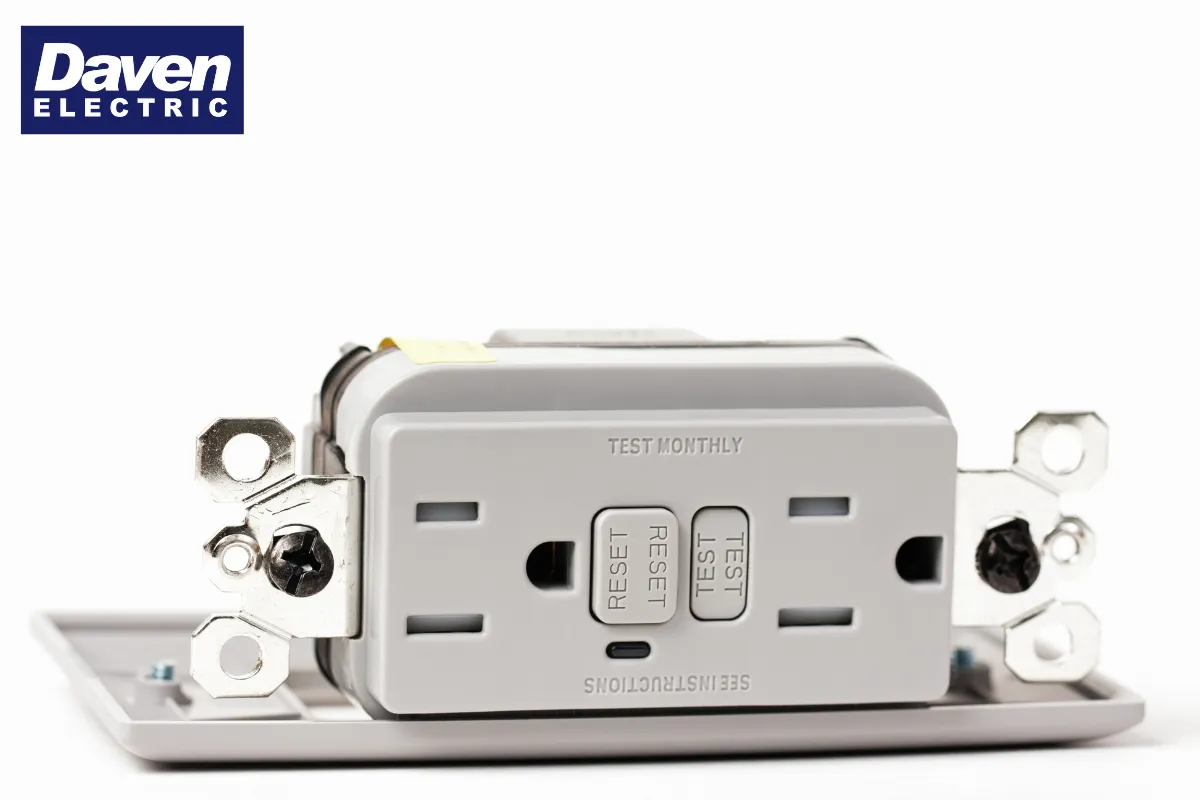
GFCI protection isn’t exclusive to large corporate buildings or industrial facilities. In Manhattan, even small businesses, cafes, service shops, and coworking spaces are required to comply with these standards. Safety codes don’t discriminate based on the size of the property. Whether the space is a boutique retail store or a multi-floor corporate office, any area with potential exposure to moisture or heavy appliance usage must include GFCI outlets.
Electricians trained in commercial code compliance understand the nuances of these rules. They can offer tailored solutions for each property type. From assessing risk zones to implementing the necessary upgrades, licensed professionals ensure that every space meets current standards and operates safely.
Electrical Safety Through Proper GFCI Use
In commercial properties throughout Manhattan, GFCI outlets are more than just a code requirement—they are a crucial part of a building’s safety infrastructure. These outlets provide rapid protection against electrical faults, helping to prevent serious injuries, damage to equipment, and potential fire hazards. They are required in a wide range of environments. They are often overlooked during renovations or maintenance unless handled by knowledgeable electricians.
Property owners and managers should prioritize GFCI compliance to ensure the safety of their properties and occupants. By ensuring that the required areas are properly equipped and functioning, they avoid costly setbacks during inspections and, more importantly, protect everyone who enters the property. In a city where regulations are enforced strictly and safety is non-negotiable, this level of diligence is essential.
Manhattan Commercial Electrician – Daven Electric Corp.
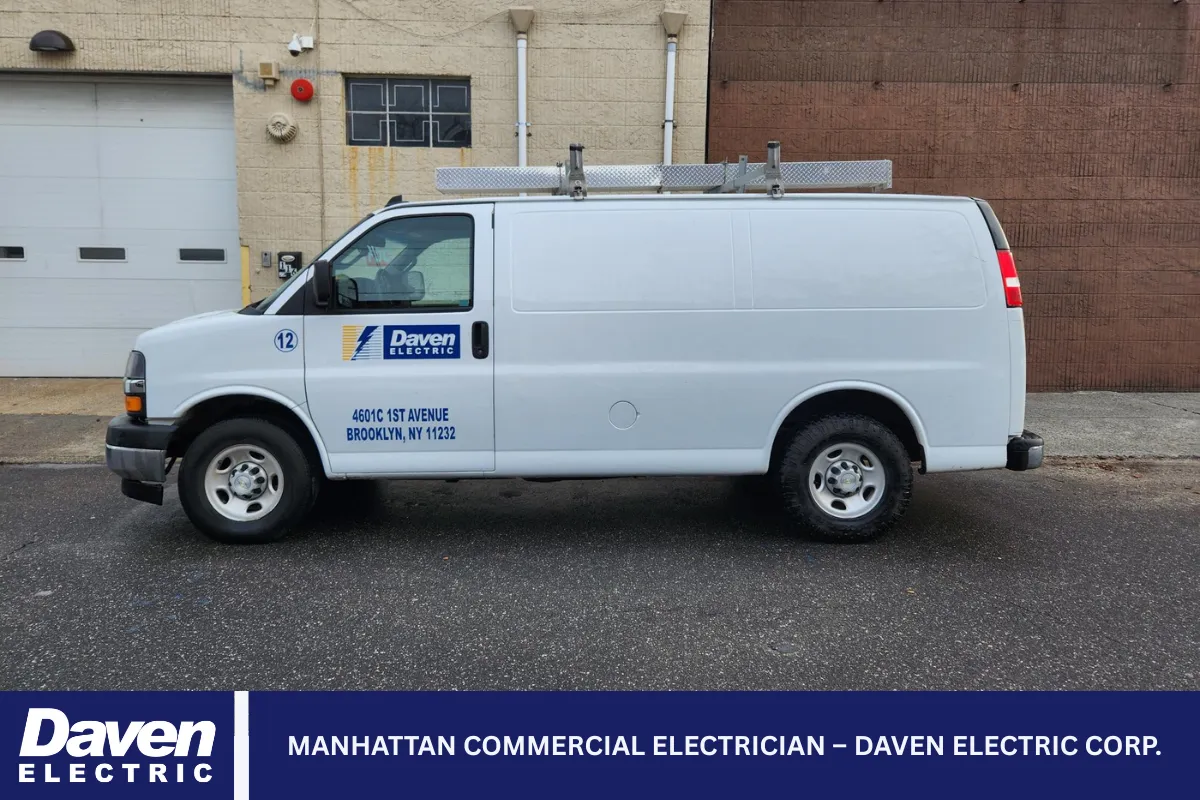
Daven Electric Corp. provides licensed and professional electrical services tailored for commercial properties throughout Manhattan and the greater New York City area. Whether you’re managing a small storefront or a large multi-use building, our experienced team ensures your electrical systems are installed, upgraded, and maintained to meet the latest codes and safety standards.
Our work includes GFCI outlet installations, complete electrical upgrades, repairs, and ongoing maintenance. For more information or to schedule a service, call us at (212) 390-1106!
Frequently Asked Questions About GFCI Outlets in Manhattan Commercial Properties
1. Are GFCI outlets legally required in all commercial buildings in Manhattan?
Not in every part of the building, but they are required in specific areas, as specified by the National Electrical Code (NEC) and the New York City Electrical Code. GFCI outlets must be installed in commercial bathrooms, kitchens, rooftop areas, utility rooms, basements, exterior spaces, and anywhere within six feet of a sink or water source. The requirement is based on the risk of electrical shock in areas where water may be present. If your commercial building is undergoing renovation, alteration, or new construction, the installation of GFCIs in these zones is mandatory. Older buildings that are undergoing electrical changes must also be brought up to code. The NYC Department of Buildings enforces these rules through inspections. It can issue violations or fines if GFCI outlets are missing where required. While GFCIs are not required in every single outlet, they are definitely necessary in many areas of all commercial properties.
2. What’s the difference between a GFCI outlet and a regular outlet in terms of safety?
The primary difference lies in protection and response time. A regular outlet allows electricity to flow through it, offering no built-in safety mechanism against shocks. A GFCI outlet, on the other hand, continuously monitors the electrical current between the hot and neutral wires. Suppose it detects even a slight imbalance (typically around 4–6 milliamps). In that case, it shuts off power to the outlet in under one-tenth of a second. This prevents electricity from flowing through unintended paths—such as a person’s body—which can lead to serious injuries or death. GFCI outlets are designed to operate in areas prone to moisture or water contact, making them ideal for use in kitchens, bathrooms, and outdoor spaces. Regular outlets may still be used in dry areas with no shock risk; however, they offer no protective action in the event of a fault. Simply put, GFCI outlets greatly reduce the risk of electrical shock and are required by code in many situations.
3. How can I tell if a GFCI outlet is working properly or needs replacement?
GFCI outlets come with built-in “Test” and “Reset” buttons. To check if one is working, press the “Test” button. This should instantly cut off power to anything plugged in. Then, press “Reset” to restore power. If pressing the “Test” button has no effect, or if the outlet fails to restore power after pressing “Reset,” the outlet may be faulty and should be inspected or replaced.
Additionally, if a GFCI trips repeatedly under normal conditions, it may indicate a more serious issue, such as damaged wiring, moisture intrusion, or a faulty appliance. GFCI outlets typically last around 10 years, but that can be shorter in high-use environments. It’s recommended that commercial properties have their outlets tested monthly as part of routine safety checks. Keeping these outlets in working condition is crucial—not just for safety, but for maintaining compliance with New York City’s electrical code and avoiding potential violations during building inspections.
4. Is it better to use a GFCI outlet or a GFCI circuit breaker for commercial applications?
Both serve the same fundamental purpose—protection against ground faults—but they work in different ways and are ideal for different setups. A GFCI outlet protects a specific outlet location and possibly others “downstream” on the same circuit. They’re easy to install and ideal when you only need protection in isolated areas, such as a break room or bathroom. A GFCI circuit breaker, installed in the electrical panel, protects the entire circuit it controls, including all outlets and devices connected to it. This can be more efficient in larger commercial settings where many outlets in the same area require protection. However, troubleshooting GFCI breakers can be more complex, and resetting them requires access to the panel. In most Manhattan commercial buildings, electricians often recommend a combination—GFCI breakers for high-demand areas and outlets for individual protection. The choice depends on the building layout, equipment usage, and accessibility of panels versus outlets.
5. What should I do if my commercial property in Manhattan doesn’t have GFCI outlets where required?
Suppose your property lacks GFCI outlets in required areas. In that case, it’s essential to address the issue promptly to ensure compliance with the New York City Electrical Code. Start by contacting a licensed commercial electrician in Manhattan for a complete electrical assessment. A professional can identify all zones that require GFCI protection and recommend necessary upgrades. Replacing standard outlets with GFCI outlets is typically a straightforward process, unless your building has outdated wiring or ungrounded systems, which may require additional work. Failing to address these upgrades could result in violations during inspections, increased insurance liabilities, or even hazardous accidents.
In some cases, failure to comply can delay permits, prevent tenant move-ins, or invalidate your Certificate of Occupancy. Ensuring GFCI compliance protects your investment and the people who use your property. It’s always more cost-effective to fix the issue ahead of time than to wait for a failed inspection or, worse, an incident caused by electrical hazards.
Read more: Why Hiring a Brooklyn Electrician Matters for Hot Tub Installations

